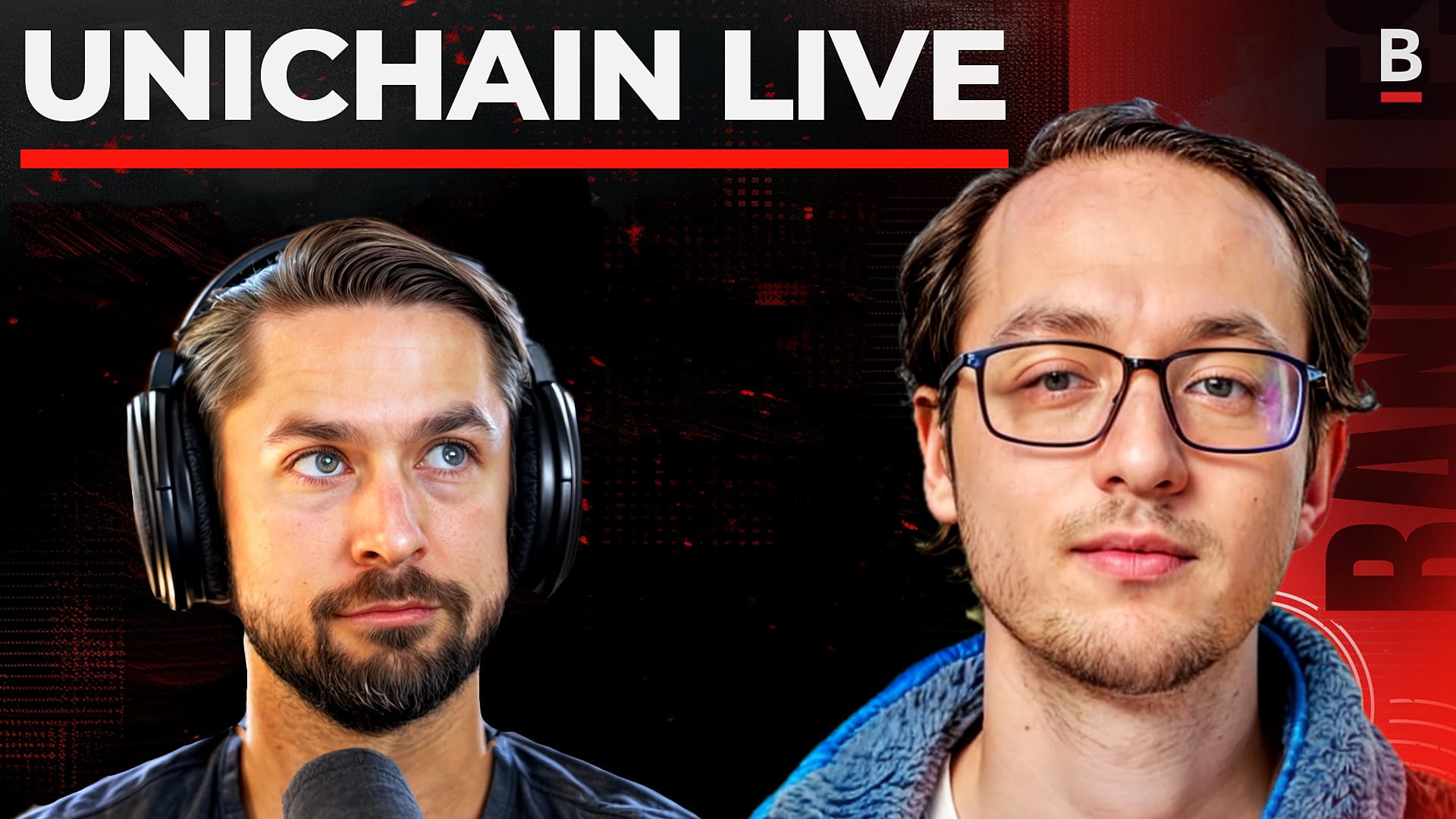Unichain is Live! What This Means For The Future of DeFi | Hayden Adams

The DeFi landscape just shifted in a major way: Uniswap has launched its own Layer 2 blockchain, Unichain. This isn’t just another Ethereum L2—it’s a bold step toward making decentralized finance more scalable, user-friendly, and efficient.
In a special episode of Bankless, we sat down with Hayden Adams, the founder of Uniswap, to unpack everything about Unichain, why it matters, and what it means for the future of Ethereum.
Why Unichain?
Uniswap is the most used DeFi protocol on Ethereum, processing billions in trading volume. But the Ethereum mainnet’s 12-second block times and high gas fees have long posed challenges for traders and liquidity providers.
Enter Unichain—a high-performance Layer 2 designed to solve core DeFi pain points:
- Faster transactions: One-second block times at launch, aiming for 250-millisecond execution.
- Fairer execution: A Flashbots-powered block builder to prevent MEV attacks and return value to users.
- Native UNI staking: The Unichain Validation Network allows UNI holders to stake their tokens and contribute to network security.
- Seamless interop: Built to integrate into Ethereum’s growing Layer 2 Superchain for better cross-chain liquidity and UX.
Flashbots & MEV Protection
One of Unichain’s most innovative components is its sequencing mechanism, built with Flashbots. This new approach brings Ethereum back to first principles: Transactions are ordered by priority fees, minimizing MEV extraction and improving fairness for DeFi traders.
The TEE-based Flashbots builder ensures that Unichain’s sequencer cannot engage in predatory practices like sandwich attacks. This means a more transparent, fair, and user-friendly trading environment for everyone.
UNI Staking & The Unichain Validation Network
For the first time, UNI holders can stake their tokens to secure the network. The Unichain Validation Network acts as a check on the sequencer, ensuring correct execution while rewarding participants with a share of Unichain’s transaction fees.
This adds a new economic utility to UNI, making it more than just a governance token—it’s now an integral part of Uniswap’s infrastructure.
The Future of DeFi: Interoperability & Developer Innovation
Perhaps the biggest vision behind Unichain is its approach to interoperability. Hayden Adams emphasized that the long-term goal is to make Ethereum’s Layer 2s feel like a single, unified network—similar to how the internet connects servers seamlessly.
Unichain is also launching Uniswap v4 hooks, turning Uniswap into a true developer platform. Hooks allow customized liquidity strategies, MEV-resistant trading, on-chain perps, and even lending protocols—all integrated into Uniswap itself.
Final Thoughts: A New Era for DeFi
Unichain represents a massive leap forward for Ethereum and DeFi. It’s faster, fairer, and more composable than previous solutions, and it sets the stage for a new wave of DeFi innovation.
If you’re a trader, developer, or just a DeFi enthusiast, now is the time to dive in. Unichain is live—what will you build?